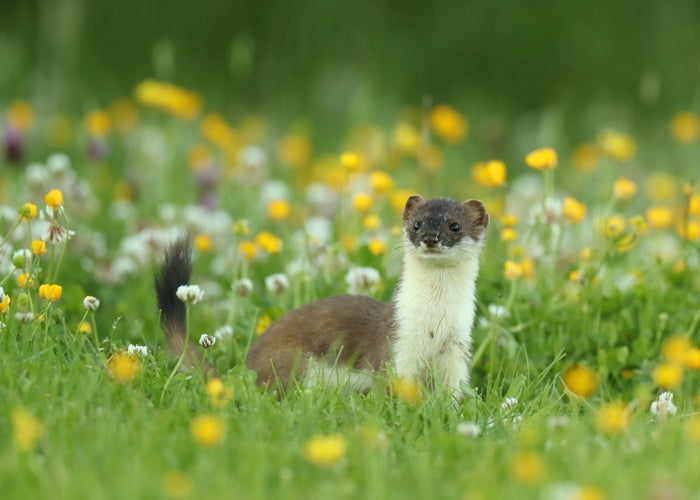
Weasels and stoats are among the world’s smallest predators, and yet they figure large in the human psyche, appearing in legends and myths from around the world.
Stories of their prowess date back to our ancient times when they were associated with witches and believed to be omens of death. The ancient Macedonians believed that seeing a weasel was a good omen, whilst the ancient Greeks held the superstition that a weasel was an embittered bride who had taken the guise of an animal and would destroy the wedding dresses of brides to be.
In medieval times weasels appeared in tales of bestiary and some of the legends were so outrageous they claimed that weasels conceived through their mouths and gave birth through their ears. They were also believed to be the only thing that could kill a basilisk, a monster so lethal it can slaughter you with a single glance, which they did by releasing a lethal odour. Whilst the saliva of a stoat could poison a grown man and in Irish folklore it was bad luck to see a stoat at the beginning of a journey.
In the British psyche a weasel’s reputation for being untrustworthy is such that the very word ‘weasel’ means sneaking or conniving. Hardly surprising since generations of British children have grown up with books like Kenneth Grahame’s The Wind in the Willows in which stoats and weasels are cast as ‘bad boys’ criminals. Admittedly in The Animals of Farthing Wood, by Colin Dann, the weasels are far more lovable, if a little cheeky.

Read more:
How to tell the difference between STOATS AND WEASELS
Mustelids and Me: The wonderful world of Weasels and Stoats as featured in BBC Countryfile Magazine June 2018
Watch my weasel and stoat videos on Youtube














